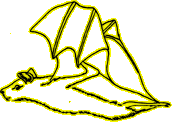| F r u i t b a t
 Many different kinds of fruit bats live in the Amazon. Some prefer to live only in the upper canopy. As their name implies, fruit bats feed on flowers and fruits. They have large eyes and sensitive noses and
use both sight and smell to locate fruit. Fruit bats have small, weak teeth and long, bristly tongues. As the bat probes the flower for nectar, it collects pollen on its furry head and neck. It then carries the pollen
to other flowers.
Many different kinds of fruit bats live in the Amazon. Some prefer to live only in the upper canopy. As their name implies, fruit bats feed on flowers and fruits. They have large eyes and sensitive noses and
use both sight and smell to locate fruit. Fruit bats have small, weak teeth and long, bristly tongues. As the bat probes the flower for nectar, it collects pollen on its furry head and neck. It then carries the pollen
to other flowers.  Many tropical trees rely on bats for successful pollination of their flowers. Whereas trees pollinated by birds often produce red flowers to attract the birds, those that rely on bat-pollinators
produce large amounts of nectar and pollen and often tend to have flowers that are drab,
bloom at night, or have a fetid smell. Many tropical trees rely on bats for successful pollination of their flowers. Whereas trees pollinated by birds often produce red flowers to attract the birds, those that rely on bat-pollinators
produce large amounts of nectar and pollen and often tend to have flowers that are drab,
bloom at night, or have a fetid smell.
Fruit bats eat the fruit of cecropia and other trees and are essential seed dispersers. The seeds pass through their digestive tracts and are thus widely scattered throughout the forest.
 Scientists have observed that most bats spend only a few seconds or so at each nectar and pollen-rich
clump of flowers. This may be because tree snakes (like the emerald tree boa) or other nocturnal
predators often wait in hiding near blooming flower clusters.
Scientists have observed that most bats spend only a few seconds or so at each nectar and pollen-rich
clump of flowers. This may be because tree snakes (like the emerald tree boa) or other nocturnal
predators often wait in hiding near blooming flower clusters.
|
![]()
![]()